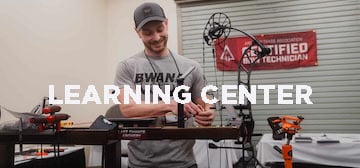A Rise in Hunters
March 2020 headlines splashed stories about grocery store shelves being bare. Items like toilet paper, milk and meat became a hot commodity. In some people, this triggered a need to become more self-sufficient. For hundreds of Americans, that desire turned into a hunting license in their pocket.
The Council to Advance Hunting and the Shooting Sports initiated a study with Southwick Associates to analyze how hunters’ rates of purchasing licenses changed during the COVID-19 pandemic. They worked with more than 40 state wildlife agencies to quantify and compare 2020 trends with 2019 hunting license sales. The study found that overall hunting license sales were up.
This new group of hunters is an opportunity for archery shops to help educate and create lifelong hunters. But becoming a proficient bowhunter involves more than heading into the woods with a tag and the right gear. Consider offering lessons or introductory bowhunting classes. Host a specialized clinic about a timely topic like choosing the right camouflage clothing, what to carry in your daypack or tactics for deer season.
Women are the fastest-growing demographic of hunters. Archery shops need to make sure they understand how to serve this rising market share. The purchasing power of women in the U.S. ranges from $5 trillion to $15 trillion annually. About 51% of outdoor consumers are women. Women are a vital market in the outdoor industry. For more information on how to target females, read “Does Your Archery Shop Target Females? It Should.”
Supply Chain Issues
Hunters have been complaining about ammo shortages for what seems like years. But now consumers are also faced with supply chain issues for archery equipment. Some materials are in short supply, and employee shortages are also creating problems. Unfortunately, the rise in inflation and gas prices is further complicating issues.
For manufacturers and retail shop owners, the best way to address any lack of inventory or delays is through honest communication with customers. A study by Edelman showed that 81% of consumers say they need to trust a brand to buy from them. Whether you’re facing a backlog on getting a product or slow shipping times, communicate the facts with your customers. Customers are smart. They’ll know if you’re telling the truth. And if you don’t have an answer, that’s exactly what you should tell them.
There are a few ways to communicate supply chain issues. Communication is important when customers ask questions while they’re in the shop. If they are inquiring about when a certain product will be back in stock, tell them everything you know. If you find yourself fielding multiple questions about the same product and when it will be available, consider adding a banner to your website or sending out a message on social media with the latest information on when it’s expected to arrive. When the product does arrive notify customers using the same method.
If you have questions about how to adjust operations to meet the changing economic climate, contact Nicole Nash, senior manager of outreach, at (507) 233-8146 or nicolenash@archerytrade.org.





